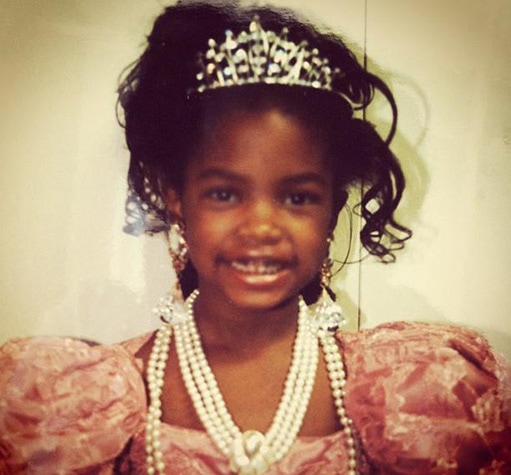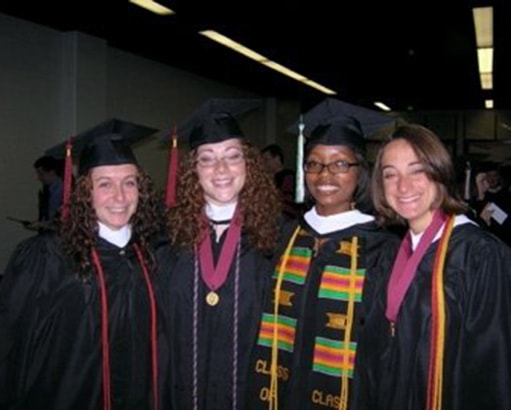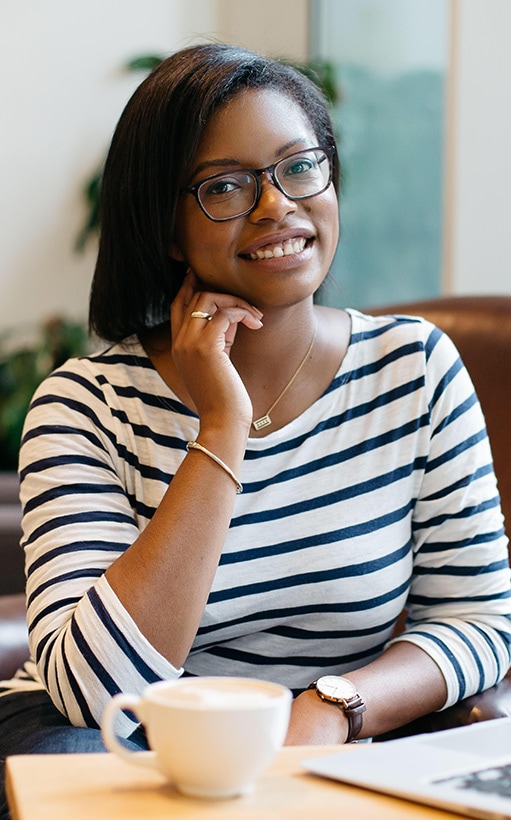Claiming My Seat at the Black Table
By Meital Caplan
February 2, 2018
L’Oreal Payton is a OneGoal staff member.

Growing up, I didn’t have a seat at the proverbial or physical Black kids’ table in the cafeteria. Despite attending mostly Black elementary and middle schools, I wasn’t “Black enough” for some of my classmates because I lived in the suburbs; listened to so-called “White music,” such as Britney Spears and Christina Aguilera; and “talked White,” avoiding the colloquialisms used by my Black peers. As a result, I was often called an “Oreo” (Black on the outside, White on the inside). To say I didn’t fit in was an understatement, and my self-confidence took a beating as a result.
Then in high school, I was one of two Black students in my graduating class, so the Black table didn’t even exist. Therefore I bonded with my White classmates over a shared love of boy bands and “The O.C.”
I thought I’d finally found my people, but as it turns out, I was unknowingly adopting a raceless identity.
So when I entered college and was first introduced to Beverly Daniel Tatum’s “Why Are All the Black Kids Sitting Together in the Cafeteria?,” a book exploring the psychology of racism, I tossed it aside.
I naively thought the book didn’t apply to me and, to be perfectly honest, I wasn’t quite as advanced in my racial identity development as I am now. But when I was reintroduced to Tatum’s bestseller as this month’s book club pick by my team at OneGoal, I couldn’t wait to dive in. Indeed, much had changed since I was a wide-eyed undergraduate 14 years ago.
For one, I’d finally experienced my personal racial awakening. After years of trying to downplay my Blackness in hopes of assimilating to White culture and to make my White peers and colleagues feel comfortable around me (lest I be labeled the stereotypical “angry Black woman”), I’d come to fully embrace my identity as a Black woman.
Unbeknownst to me, the seeds of this awakening were first planted during my college’s pre-orientation program for students of color. It was there, at a predominantly White institution, that I met other students who had a similar background to me: middle-class family living in mostly White neighborhoods, often one of the few people of color at their school. I realized I wasn’t alone and spent the rest of my college experience learning more about the history and culture I had shunned growing up through my involvement with the Black Student Association and by becoming a mentor to younger students of color.


But it wasn’t until my late 20s that I declared out loud that I was, in fact, Black and proud.
In a 2016 blog post, I listed all the ways that year had become my Blackest and wokest year yet.
Why then? Maybe it was the release of Beyoncé’s “Lemonade,” a 65-minute visual love letter to Black women everywhere. Maybe it was the back-to-back murders of Alton Sterling and Philando Castile among others. Maybe it was the microaggressions I had to endure in both my personal and professional life.
Perhaps my racial awakening was a culmination of all these events and a lifetime of what Harvard psychiatrist Dr. Chester Pierce calls the “mundane extreme environmental stress” of racism. Regardless of the circumstances, I am glad to have arrived at this epiphany and claim my seat at the Black table.
As Tatum notes in her book, “one’s presence at the Black table is often an expression of one’s identity development, which evolves over time.” Whereas I wasn’t developmentally ready for the Black table in middle school or high school, I’m now ready to shed my racelessness and do everything within my power to fight for a more equitable and just society — both in my professional work at OneGoal and in my personal life as a freelance writer and mentor to young women of color.
We all have an opportunity to make a difference. So in the words of Black tennis legend Arthur Ashe, I encourage you to “start where you are, use what you have and do what you can.”